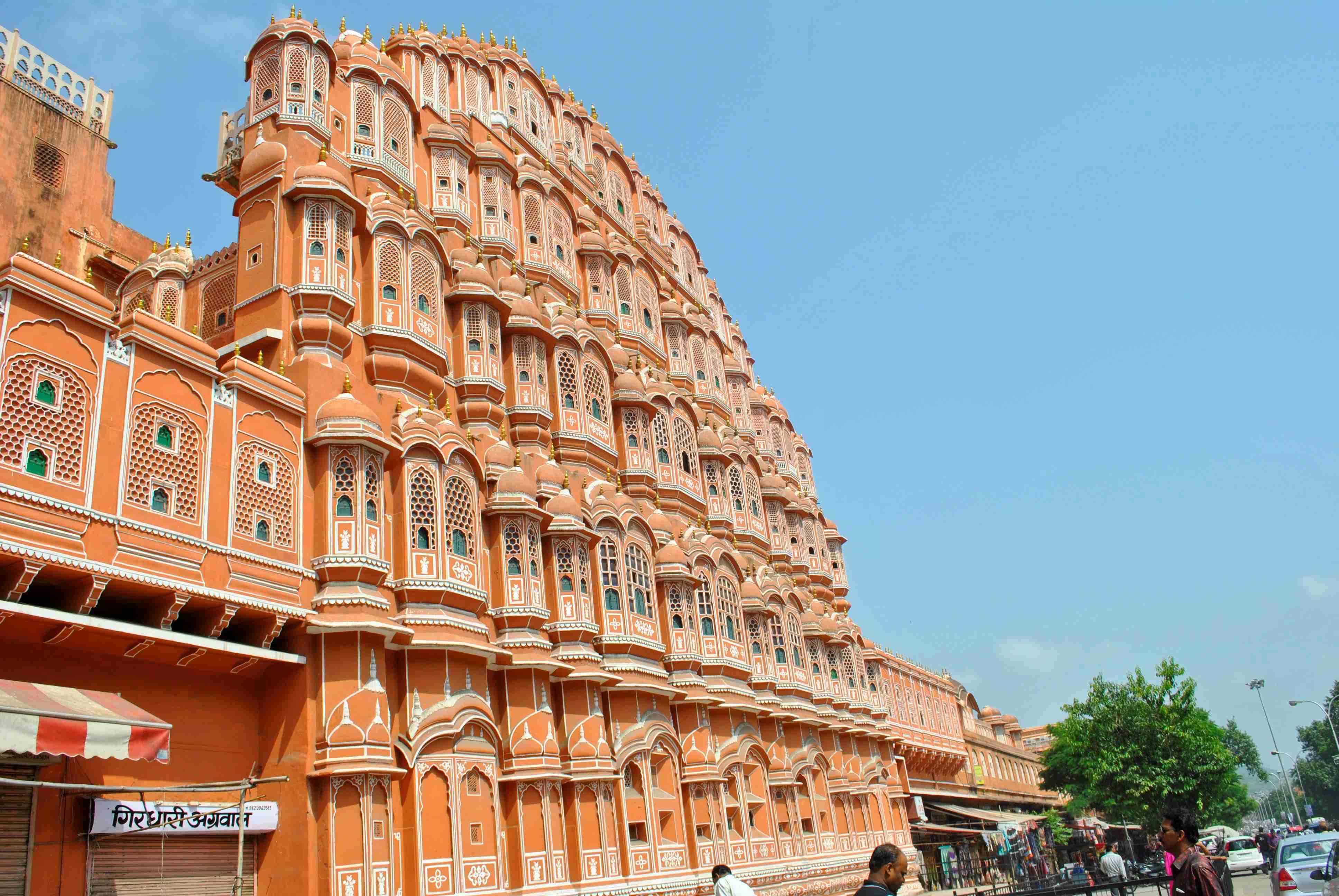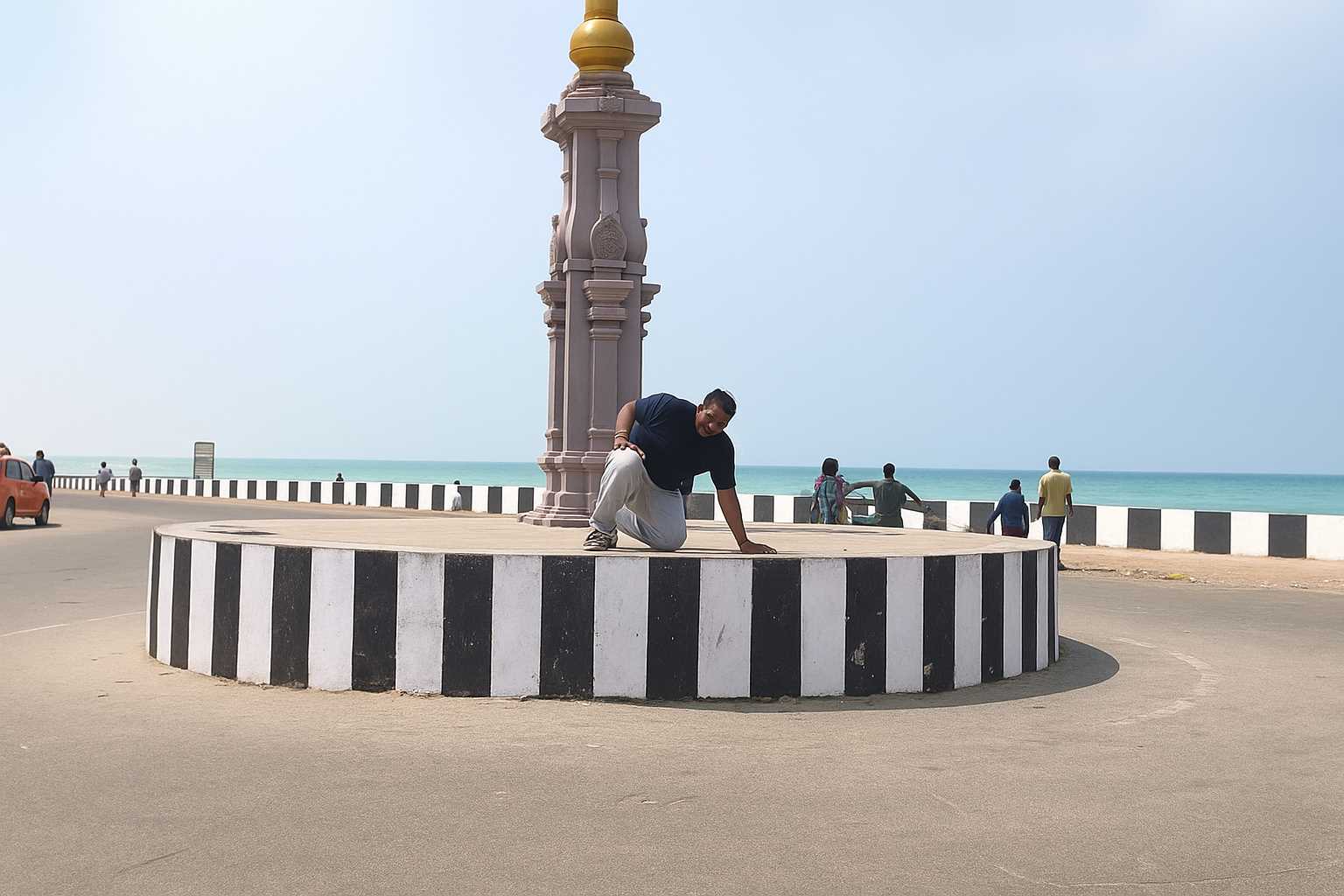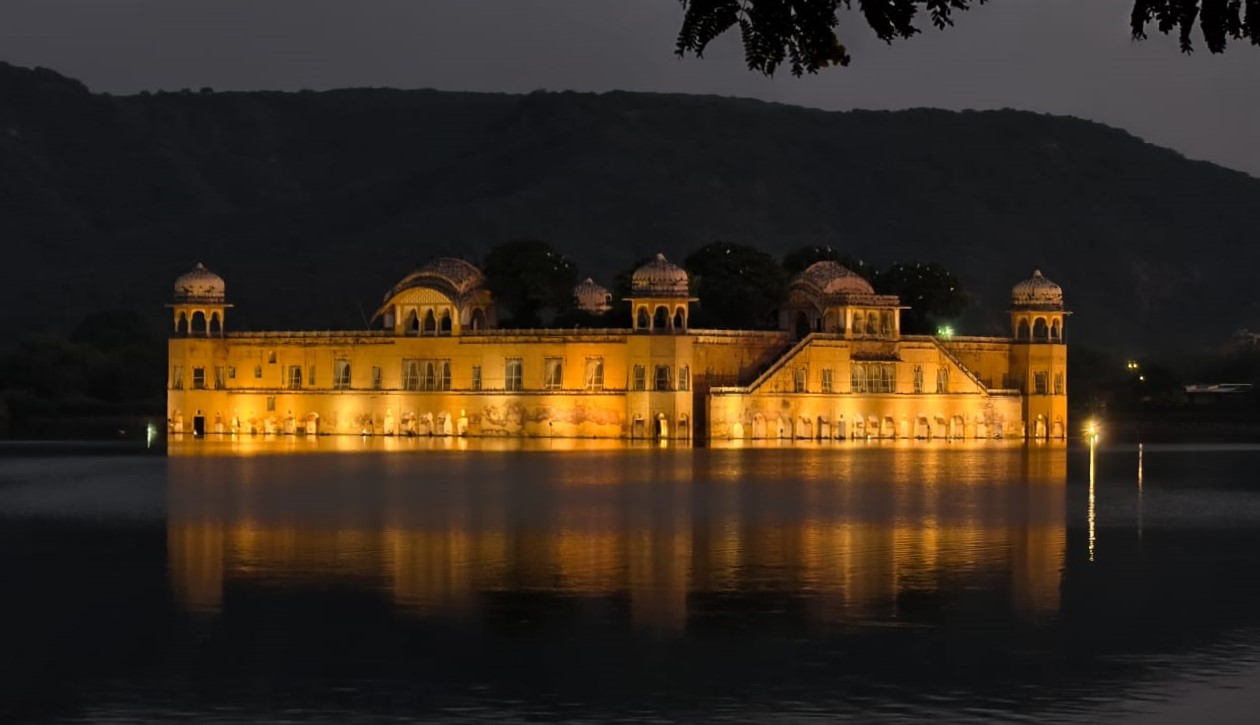A Symbol of Love Etched in White Marble
Taj Mahal – A symbol of love between two human hearts constructed on Indian soil centuries ago transformed to the soul of Indian tourism for the entire world, A memorial for which a view on a moon light costs 25 times than on an ordinary day visit, a unanimous choice for one of the world’s wonders in the new list among the old ones. An iconic structure with unenviable symmetry being its beauty, an architectural wonder that defies the many people’s notion of having content with only one visit to any tourist place and finally a disclaimer from me that this travelogue may well be like a drop in an ocean among the countless articles, travel stories and blogs that had written so far about Taj Mahal.

Location and Connectivity
Taj Mahal which seems to be an odd one out among the most prominent tourist’s locations within India is situated in Agra in the state of UP. The proximity of this place with Delhi also makes it more convenient and fame especially among foreign tourists. A world class National Highway from Delhi to Agra via Noida has been also available now that makes the level of comfort for road travel many notches up comparing with the struggle through the old highway.
My Many Visits
Even after many trips to Taj with family and friends whose first choice always remains Taj mahal in the list of places to visit when in Delhi and except the travelling and driving to and from Delhi, but I never lost the excitement in visiting this place even in extreme horrible climate associated with North India. Each trip throws up either some interesting facts, some never seen perspective look from a new location within the structure or the fresh appearance of entire Taj Mahal depends on the brightness of sun especially in the evenings.

The Role of Local Guides
A local guide is of great help here and how much one would be able to explore with historical facts and hidden secrets depends on the guide we accompany. All the way from the main entrance till exit there are many interesting symmetries, stunning designs and patterns on the wall, predefined peep holes and locations that reveals unexpected view of other parts of the complex which only an expert guide can explain in detail. The only way to understand what Taj Mahal is and where were its real beauty is to hire a guide and they are enough in numbers from the parking place to the main entrance with proper accreditation cards as well as duplicate too. They also turn out to be our photographers even knowing the best places within the whole complex for stunning photographs with Taj Mahal in the background.
Entering the Complex
All my trips were on holidays and weekends which means standing in a long queue was part of the visit every time before crossing the main entrance and after the security screening it is free until we reach the main entry to the Taj. The compound wall in red sandstone is so huge that everyone is excused from getting a glimpse of Taj Mahal from outside. The openings made in arch shapes are equally matching for such a grand memorial. Taj Mahal is also one of the UNESCO’S world heritage sites and the security screening is slightly stricter than normally have in other tourists’ attraction in India.
Two Indias Separated by a Wall
Comparison is not fair, but it was funny to think that a huge compound wall separates two India with contrasting identities. Outside, a 21st century Indian city consists of unorganized, congested streets with cows wandering on the roads and inside of the compound wall, a reflection of works by Mughal empire left behind almost four centuries ago with huge trees and gardens providing refreshing cool air everywhere in the vicinity.

The Grand Gateway
A short walk from security check took us to the gateway to the Taj Mahal another glorious entrance within the complex. The gate itself was a piece of outstanding construction made in red sandstone with white marble and other stones to enjoy for a while. The Arabic verses which mean “inviting visitors into paradise” inscribed in the white marble on both sides of the opening in a vertical plane is in such a way that the letters on the bottom and at the top at a height of almost 90 feet looks exactly of same size at the bottom and at the top instead of narrowing as the distance from our eyes goes further. The guide tried to make his point by telling us to think about how a railway track could see few meters away after which a closer look on it revealed its precision in which those words were imprinted in the marble.
First Glimpse of the Taj
The first look of Taj after we crossed this gate brought mixed feelings, one that of finally got to see this ultimate beauty, second an emotional excitement, third a statement being expressed as nothing is Impossible for love, and love is same and blind for emperors too. It is also realized that whether it is the first, second or fifth visit, this may be the only structure in India which makes the same exclamation from everyone’s conscience every time the visitors will realize how this memorial for love has been transformed to an architecturally wonderful building.
The Garden of Symmetry

The impressive garden between the gate and Taj Mahal at far behind was another proof that there was no shortage for landscape architects too during those times. It was spread over a large area that the huge crowd seems to be dispersed within the garden and they looked immersed in blooming flowers, spectacularly arranged fountain and in the normal custom of photo-shoots. Everyone seen going crazy for photos and selfies. No wonder why this world’s wonder from both ancient and modern lists is always in the list of most photographed locations worldwide every year. Most of the guides here are so expert in handling every type of professional camera like a pro as visitors are not worried much to hand over it to them to capture a photo with everyone in the frame with Taj as background.
Reaching the Taj mahal
After a 15-20 minutes’ walk enjoying the beauty of Taj Mahal in each step and looking at the people experiencing Taj in many ways to make their visit so memorable by capturing as many photos as possible at different locations around and in a variety of poses, we reached in front of the white structure where an average of 10000 people will come in a day.
Shoe keeping locations were available on both sides of the entrance to the plinth level as shoes and chappals are not allowed to avoid scratches and damages. Alternatively, for those who are lucky to collect a white funny cover can use it as a protection over the shoes and enter. But how much time it will take to enter the inside of Taj Mahal depends on the crowd. In one of my trips, we stood in queue encircling the whole building because of the heavy rush on a holiday.

At the Plinth
A few steps to be climbed to reach the floor level of the Taj and as I entered up my eyes were wandered in different directions and soon realized that the essence of a visit to Taj does not lie in the white marble beauty only but everywhere it was a picture-perfect scenery to be cherished. The four minarets at four corners standing tall in a slight angle inwards, the huge centre dome and adjacent smaller domes made with same white marbles, the Yamuna River flowing on the back side, an unfinished face of another Taj which never materialized on other side of the river planned to be constructed with black marble, the red Agra fort little far away where Shahjahan who had been locked up as a prisoner by his son Aurangzeb staring at Taj Mahal, adjacent buildings which could well be unique and famous in their own name if it were not happened to be part of Taj but elsewhere. These were few things that could fill any heart with pure joy before moving to know what real Taj Mahal is.

Inside the Taj Mahal
Waiting in a queue is always a boring thing anywhere for any purpose, but in Taj standing in a slow-moving line of people was another opportunity to closely watch the patterns; design and how much effort might had put in by the workers, masons, artisans etc to create such a huge construction with unenviable symmetry. As my professional life is very much related to engineering and had seen every technology, possible equipment and machineries associated with construction of tall buildings I spared my thoughts on that 20000 plus workers toiled for long 22 years when no such mechanized efforts were available for lifting, transporting etc and the final product shaped in an immaculately stunning piece of construction which still remains as a reminder to world over about Mughal architecture as fresh as that made 4 centuries ago except for pollution damages.
Inside Taj – where the tombs were placed – the first impression was that the interior is a mismatch for the awe-inspiring look of Taj from the outside. A marble chamber small in size with centre portion occupied by the two tombs, one for Shahjahan’s which is slightly bigger and other one which belongs to Mumtaz’. There must be many designs, peculiarities and much more valuable and exclusive items that has been adorning this chamber but sadly the large number of people gathered inside since the queue was only up to the door and everyone rushing to get a glimpse of the tombs with absence of any artificial lights made it practically a hard task to enjoy or look into everything in detail. The guide was trying his level best to perform his job for what he intended to but the sound and rush by the people were such that it was so hard to understand what he was trying to convey except one thing that the original remaining’ of Mumtaz is way below what we were seeing in the chamber.
Exploring the Surroundings of Taj mahal

The rest of the areas inside was not so crowded but policemen were stationed in few locations to empty the area for not to get crowded again since visitors were seen roaming around here and there spending a lot of time for photos, watching the beauty of walls, the domes above and we were not different either trying to stay as long as possible to see the engraving designs on white marble with spotless precision in the walls, in the handrails etc. The guide also showed a hole through which the full mosque on the outside can be captured with a mobile.
Exit was through the back side and none of us were in a hurry to leave and decided to spend some more time appreciating all possible locations and corners in a not so hot rays of bright evening sun. The mosque on the west side was another notable attraction and to maintain the symmetry a guest house with same size and type is made with red sandstone on the other side. Time for small regret now for being skipped the lectures on Mughal construction and architecture during my engineering classes as realized it was highly exclusive with a special place in history appreciated worldwide.
The Museum Visit
A visit to the nearby museum on return was equally important especially for those who were pondered about any existing details during the construction of Taj Mahal and also to few others who were so keen to indulge with history. It was really surprising by seeing the different handmade drawings used for construction. It was also amusing that the engineering excellence of such a complicated structure was completed with pinpoint accuracy with respect to the drawings.
Site plan, elevation, position of the tombs and many details prepared prior to executing the job were preserved very carefully in one of the galleries. Some royal orders insisting on regular supply of Marbles from Rajasthan were also available. Other two galleries contain some swords, arms, paintings, royal documents, specimens of handwritings of that period and other stuffs related to making of Taj Mahal where the time spent was worth too.
Final Moments and Reflections on Taj Mahal
Finally, it was time to leave the place and guide was still accompanying us helping with more photo shoots, giving more knowledge about the trees on the garden, and funny stories he is encountering every day with fluent English accent than some of us possess. We noticed some cell type individual rooms with half the size of normal rooms on both sides of the walkway and as per the guide it was accommodation facility arranged for workers during Taj Mahal’s construction.
Some local purchase was also part of any such trips, though we bought some stuffs from the roadside vendors and small shops close to the parking area. But the secret of guide following with too much affection was realized only when he insisted us for brief visit to some Govt approved handicrafts shops as he will get a commission for each purchase we make. Replicas of Taj ranging from rupees 200 to few thousands were available along with other stuffs. It was an automatic selection to buy one each for all of us as souvenirs of visited one of the most beautiful man-made marvels on earth appreciated by the whole world.
While travelling back to Delhi I was thinking it was a visit where people across the globe irrespective of their nationality, class, caste, religion, wealth is ready to take any pain and time to worship the Universal feeling of Love and experience may be “Royal Power of love” or “Power of Royal love!!!!” etched in white marbles.
Click Here to go through another Timeless city of India
Click Here for Wikipedia page:
Discover more from NOTES FROM THE ROAD
Subscribe to get the latest posts sent to your email.





Thanks for sharing the photo of the mosque on the western side. While the Taj Mahal draws most of the attention, its surrounding structures are often overlooked.
The Taj Mahal is truly a marvel that transcends time, embodying both love and architectural brilliance. It’s fascinating how it continues to captivate visitors, even those who’ve seen it multiple times. The moonlight view being 25 times more expensive adds an intriguing layer to its allure—almost like a premium experience for a premium moment. I wonder, though, does the hype around it overshadow the emotional and historical depth it holds? It’s interesting how it remains a top choice for tourists despite being in a city that might not have as much to offer otherwise. What’s your favorite lesser-known fact about the Taj Mahal that most visitors might miss? Also, do you think the focus on its beauty sometimes overshadows the cultural and historical narrative it represents?